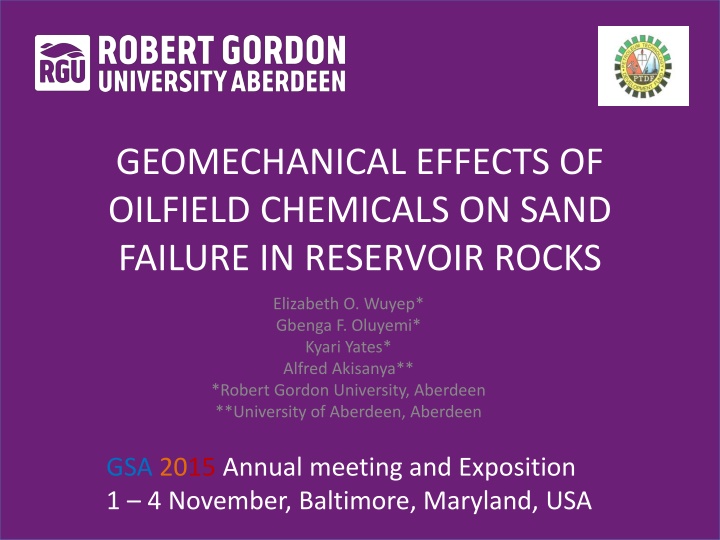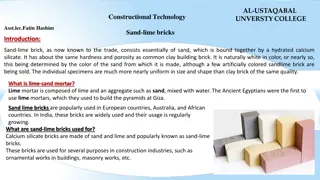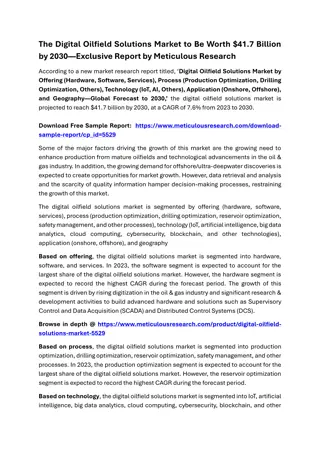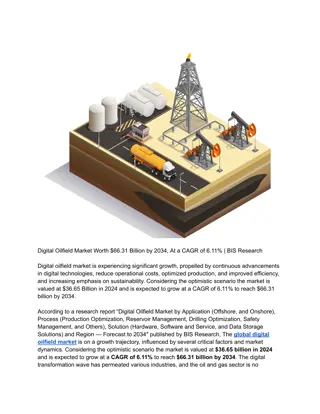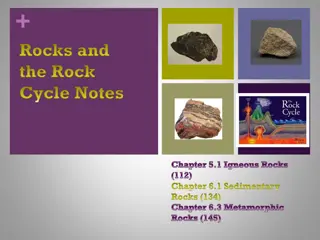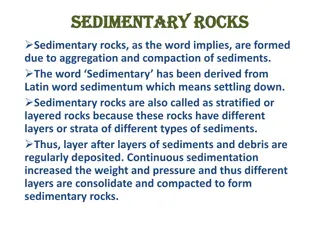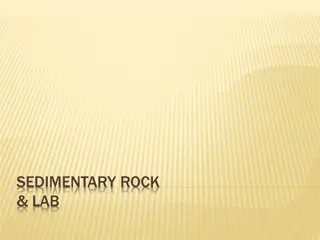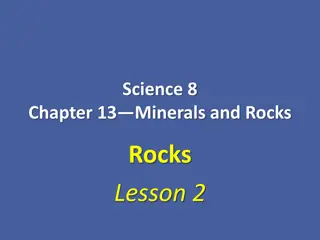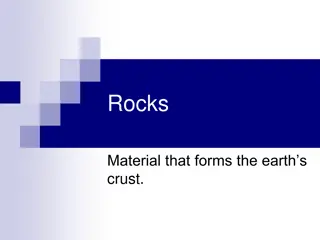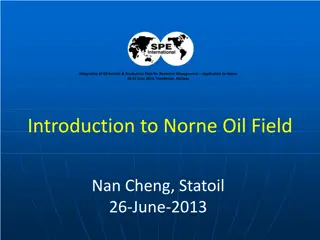Geomechanical Effects of Oilfield Chemicals on Sand Failure in Reservoir Rocks
This study by Elizabeth O. Wuyep et al. explores the geomechanical effects of oilfield chemicals on sand failure in reservoir rocks. It discusses the role of oilfield chemicals, limitations of previous works, experimental flow chart, and static saturation tests. The research emphasizes the need for further investigation into the mechanisms of how oilfield chemicals impact the strength of reservoir rocks and sand failure.
Download Presentation

Please find below an Image/Link to download the presentation.
The content on the website is provided AS IS for your information and personal use only. It may not be sold, licensed, or shared on other websites without obtaining consent from the author.If you encounter any issues during the download, it is possible that the publisher has removed the file from their server.
You are allowed to download the files provided on this website for personal or commercial use, subject to the condition that they are used lawfully. All files are the property of their respective owners.
The content on the website is provided AS IS for your information and personal use only. It may not be sold, licensed, or shared on other websites without obtaining consent from the author.
E N D
Presentation Transcript
GEOMECHANICAL EFFECTS OF OILFIELD CHEMICALS ON SAND FAILURE IN RESERVOIR ROCKS Elizabeth O. Wuyep* Gbenga F. Oluyemi* Kyari Yates* Alfred Akisanya** *Robert Gordon University, Aberdeen **University of Aberdeen, Aberdeen GSA 2015 Annual meeting and Exposition 1 4 November, Baltimore, Maryland, USA
Outline Introduction Approaches Results Conclusion
Introduction Sand failure!!!!! How failure happen? does this The role of oilfield chemicals. Current industry s approach.
Limitations of the previous works The Seto et al., 1997: - Was restricted to static tests; - Chemicals utilized have different chemistry entirely from the commonly used oilfield chemicals. The Oluyemi, 2014: - the study was restricted to the use of scale inhibitor amongst the wider range of chemicals - no mechanical test was involved; - did not use XRD to quantify the mineral composition of the rock before and after chemical treatment.
So what next..??? Mechanisms of the effects of oilfield chemicals on the strength of reservoir rocks. geomechanical Mechanical techniques and a wider range of laboratory chemical applications. testing, analytical Baseline for further study to quantify the effects of these chemicals on sand failure and production.
Experimental flow chart Saturation tests Mechanical test Particle size analysis Analytical tests SEM SEM/EDX XRD
Saturated fluids Brine filtered using sintered glass filter papers to eliminate extraneous fines. A stock of 1% betaine, glutaraldehyde and 5% phosphonate scale inhibitor (ATMP) were prepared by diluting 2.50g and 12.50g of the chemicals respectively in 250ml of brine. Element Na K Ca Mg Ba Sr Fe Cl SO4 HCO3 Concentration (ppm) 24870 887 785 136 561 108 3 39800 35 2014
Static Saturation Test Cores inside Brine and chemicals Brine ATMP Glutaraldehyde Betaine
Static Saturation Test Cores inside Brine and chemicals Brine ATMP Glutaraldehyde Betaine Effluents from Brine and chemicals Brine effluent
Static Saturation Test Cores inside Brine and chemicals Brine ATMP Glutaraldehyde Betaine Effluents from Brine and chemicals Brine effluent Glut. effluent Betaine effluent ATMP effluent
Results Well-sorted, sub- rounded mineral confirmed by EDX scan (c) . SEM/EDX results for sandstone before and after treatment quartz SEM Image SST before treatment SEM Image SST after treatment (a) (b) Fine-grained mineral assemblages resulting altered constituent. from mineral EDX Scan SST after treatment EDX Scan- SST before treatment Evidence altered minerals spread surface larger unaltered quartz grains. of (c) (d) on of the the
SEM/EDX results for limestone SEM image (a) shows poorly rhombohedral calcite as confirmed by EDX. sorted, SEM Image LST after treatment SEM Image LST before treatment (b) (a) Evidence loosening in image (b) as a result of alteration caused by chemical formation interaction. of grain EDX scan - LST before treatment EDX scan LST after treatment No alteration feature is observed image (a). with (d) (c)
Elemental composition of the sandstone using EDX Element s Untreate d Sandston e atomic wt% Normalized ratio (element/S i) % SST treated with Corrosio n inhibitor atomic wt% Normalized ratio (element/S i) % SST treated with Scale inhibito r atomic wt% Normalized ratio (element/S i) % SST in Brine Normaliz ed (element /Si) % ratio Na Mg Al Ag P Cl K Ca Fe Ti Si ND 0.61 6.25 ND 0.25 1.55 0.88 0.13 0.86 ND 24.27 ND 2.5 0.3 ND 1 6.4 3.6 0.5 3.5 ND 100 0.48 0.23 2.92 ND ND 0.33 1.05 4.53 0.42 0.26 16.56 2.3 1.4 17.6 ND ND 2 6.3 27 2.5 1.6 100 1.29 0.49 2.81 1.33 2.03 2.07 0.24 0.10 1.46 ND 20.18 6.4 2.4 14 6.6 10.1 10 1.2 0.5 7.2 ND 100 ND nd 1.57 ND ND 0.21 0.24 ND 0.10 ND 30.03 ND ND 5.2 ND ND 0.7 0.8 ND 03 ND 100 ND =Not detected
Elemental composition of the limestone using EDX Eleme nts Untrea ted limest one atomic wt% Normaliz ed (element /Ca) % LST treat ed with Bioci de atomi c wt% Normaliz ed ratio (element /Ca) % LST treate d with Corros ion inhibit or atomic wt% Normaliz ed (element /Cl) % LST treate d with Scale inhibi tor atomi c wt% ND 0.37 2.02 0.34 ND ND 0.24 29.36 Normaliz ed (element /Ca) % ratio ratio ratio Na Mg Al Si S Cl Fe Ca 33.46 0.58 1.02 3.98 ND 35.84 0.36 3.09 93.4 1.6 2.8 11.1 ND 100 1 8.6 ND 0.26 0.13 0.48 0.10 ND 0.20 17.29 ND 1.5 0.75 2.8 0.58 ND 1.2 100 ND 0.32 0.45 0.35 ND 0.15 0.17 24.16 ND 1.3 1.9 1.4 ND 0.6 0.7 100 ND 1.3 6.9 1.2 ND ND 0.8 100 ND = Not detected
XRD Analysis before chemical treatment SST_XRD Quartz (SiO2): 85% Calcite = 85% Quartz = 9%
XRD Analysis before chemical treatment SST_XRD Quartz (SiO2): 85% Calcite = 85% Quartz = 9%
Mechanical Test Failure effects chemically treated sandstone Samples Test rate (mm/min) Max. Load (N) Strain (mm/mm) Stress (MPa) Young s modulus (MPa) 2,221 Sandstone before treatment Sandstone after treatment 0.5 45,307 0.04 40.44 0.5 54,618 0.07 18.09 282
Mechanical Test- Failure effects of chemically treated Limestone
Mechanical Test- Failure effects of chemically treated Limestone
Mechanical Test- Failure effects of chemically treated Limestone Samples Test rate (mm/min) 0.5 Max. Load (N) Strain (mm/mm) 0.04 Stress (MPa) Young s modulus (MPa) 2,134 Limestone before treatment Limene after treatment 85,176 74.27 0.5 78,922 0.02 45.46 2,083
Particle size distributions test Substantial Particles introduced into the chemicals Chemical interaction with core materials Weakening of the cores grain fabrics Disintegration of the existed grain to grain binding Release and migration of sand grain.
Conclusion Results clearly suggest that oilfield chemicals application: Altered the grain fabrics of the reservoir rock. Weakened the UCS. Caused fine-grained mineral ass. Future works.
References Oluyemi, G.F., 2014. Conceptual Physicochemical Models for Scale Inhibitor-Formation Interaction. Petroleum Science and Technology, 32:3, pp 253 -260. Rock Seto, M., Engebretson, R.R., VonWandruszka, R., Nag, D.K., Vutukuri, V.S., and Katsuyama, K, (1997). Effect of chemical additives on the strength of sandstone. Int. J. Rock Mech. Min. Sci. Geomech. 34:691.
